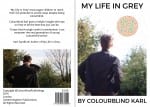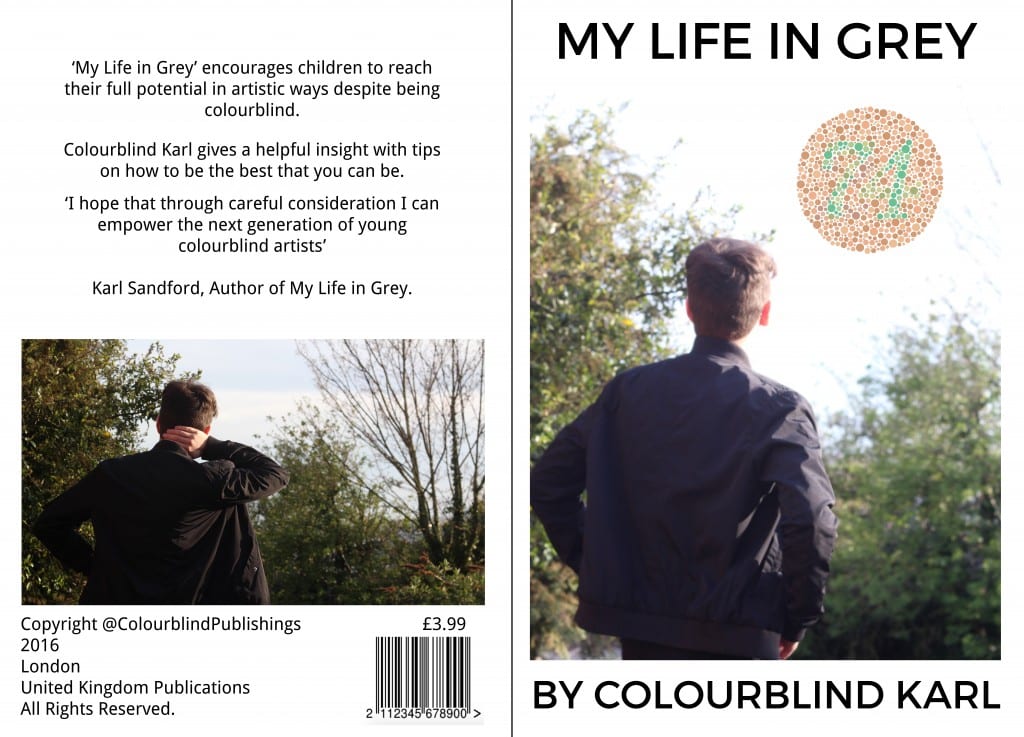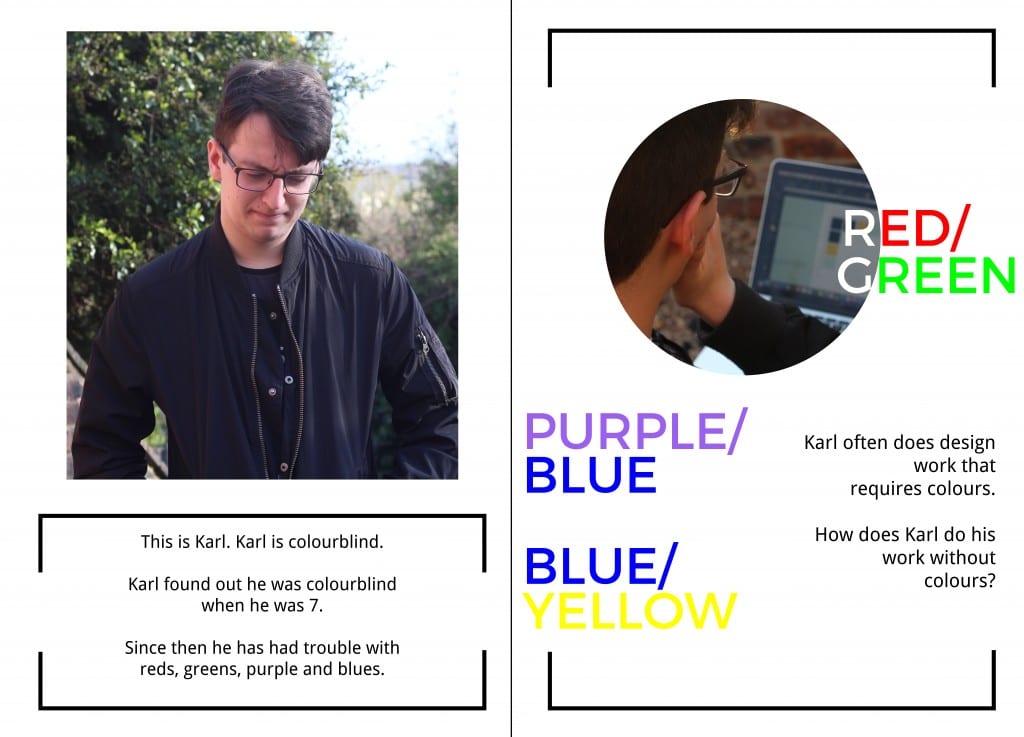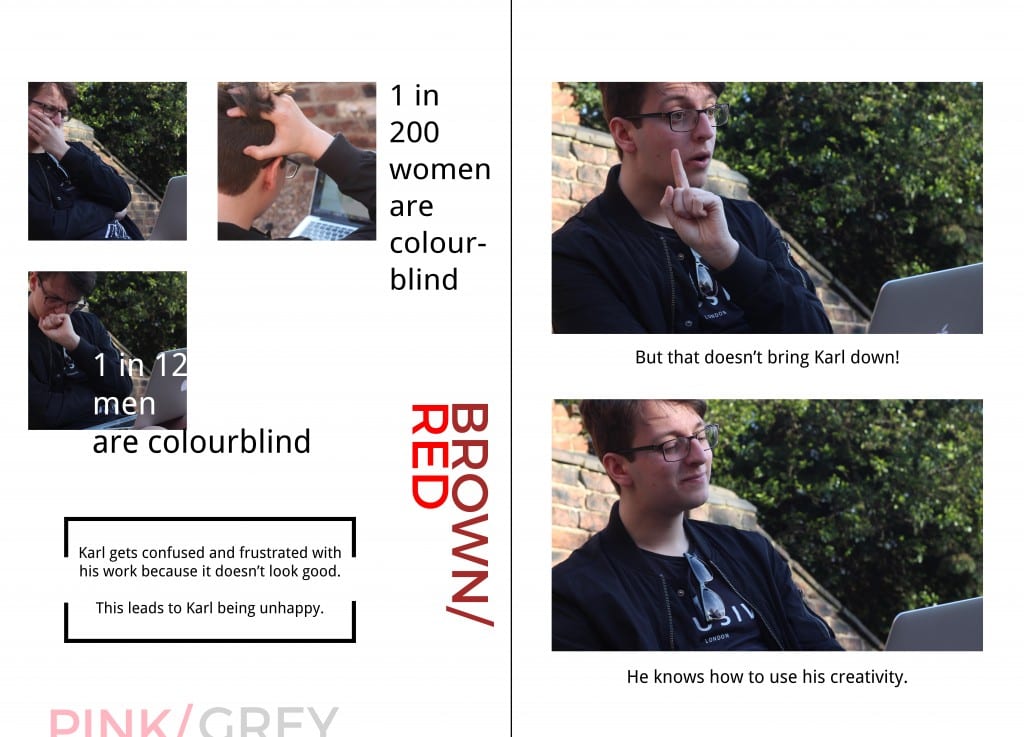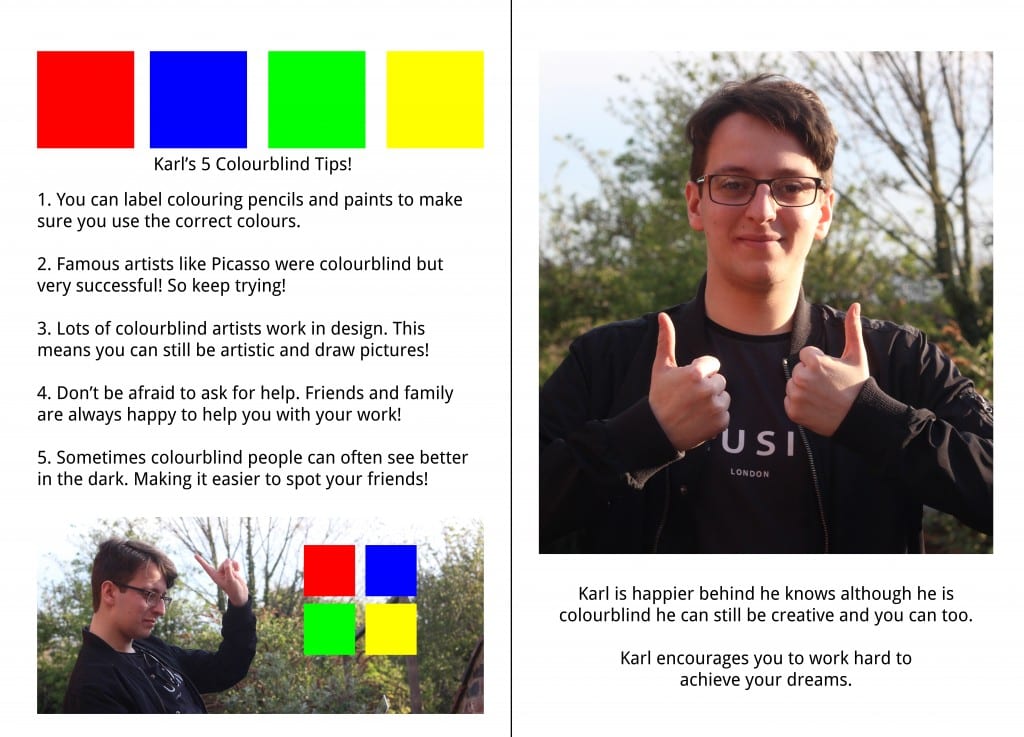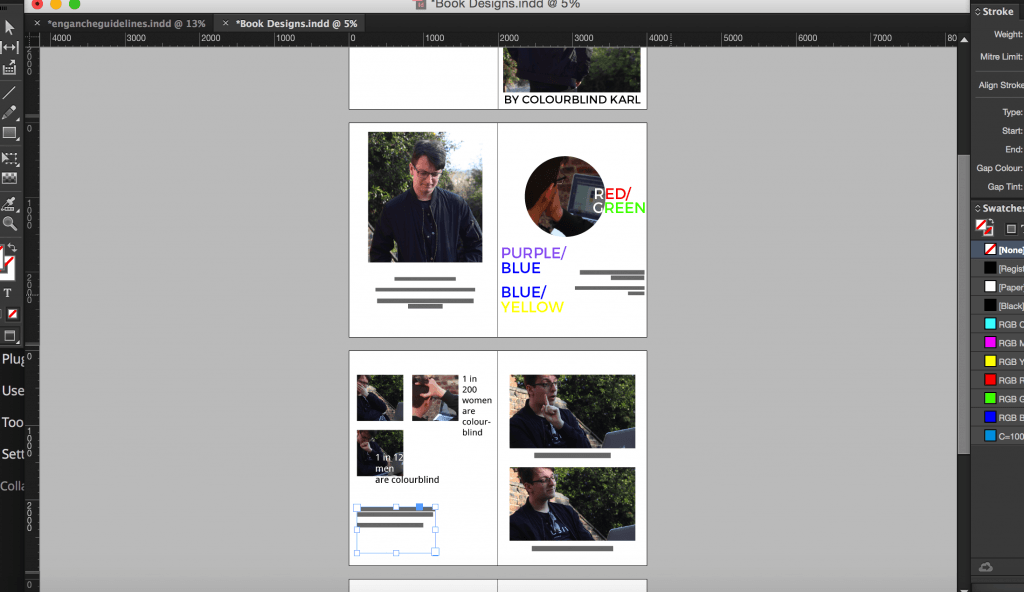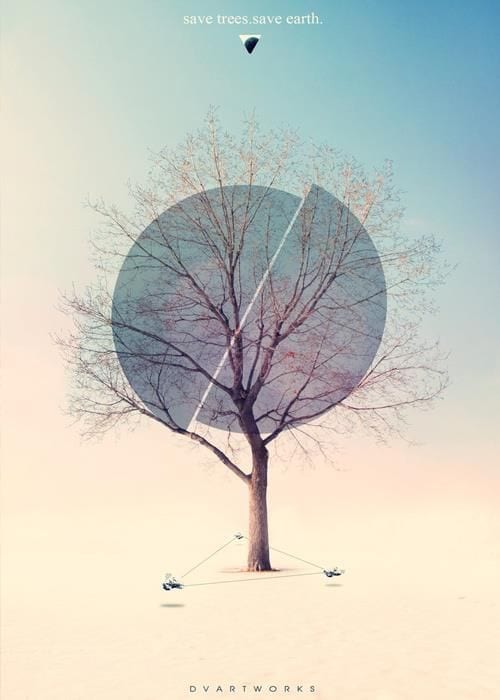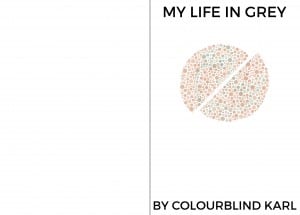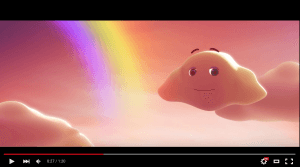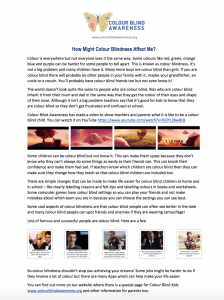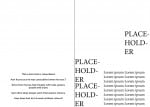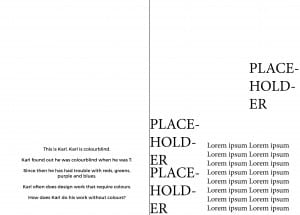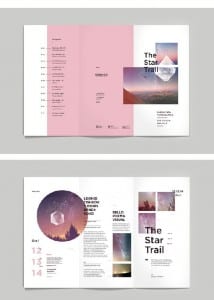Final Designs for Children’s Book:
Design Process
The design process of this book derived from my own experiences on being colourblind. When given the brief of dealing with a troubling matter I immediately leapt towards colourblindness. Children can be turned away from the arts because of this hinderance. However, they shouldn’t. The book covers the story of ‘Colourblind Karl’ and his own frustrations. The narrative is weak in the aspect that the character of ‘Colourblind Karl’ is not explored in depth. However, this was soon the intention behind the book. The main focal point is ‘Karl’s 5 Colourblind Tips’. These tips are meant to encourage children to reach their full potential and harness their creativity.
The book itself lacks any kind of technical skill. However, I leaned more towards a photographic montage book. This was because I wanted to move away from illustrated drawings and focus on having a character that children could be familiar with. The first 4 pages of the main book are very disjointed and remain not formulaic through the work. This is to represent the frustrations that ‘Colourblind Karl’ faces when he is trying to do his work. It is a disorder created through disorder. The final 2 pages are then arranged in a formulaic layout. This is to show the reorganisation of ‘Karl’s’ mind and his own self-belief. So despite the lack of any real technical abilities shown in the production of the book. I focused on a layout that would represent the mending of disorder to create harmony.
My design was heavily influenced by DVARTWORKS. Therefore I chose to create contrast through using RED/GREEN, PURPLE/BLUE, BLUE/YELLOW and PINK/GREY. This further supports the creation of disorder on the page through the random placement.
Conclusive Comments
Given the chance to make this piece stronger I would increase the amount of technical skill applied to this brief. I have kept the overall design very simplistic to suit my target audience, however I would like to take this even further to develop a different style to be applied to the same audience.
Before uploading to the gallery I will change the grammatical errors and clean up the whole design.
